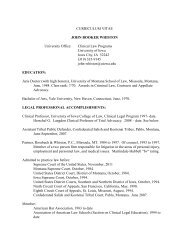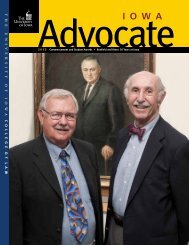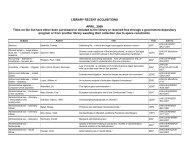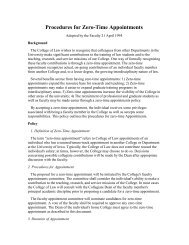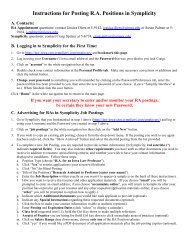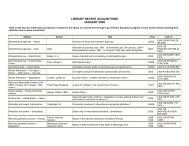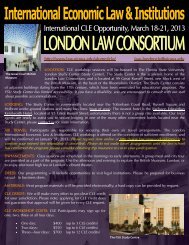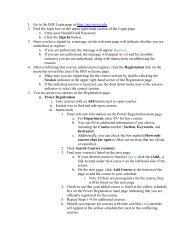Free Writing Steve Thel*
Free Writing Steve Thel*
Free Writing Steve Thel*
- No tags were found...
You also want an ePaper? Increase the reach of your titles
YUMPU automatically turns print PDFs into web optimized ePapers that Google loves.
Thel Final9/18/2008 1:11 PM980 The Journal of Corporation Law [Vol. 33:4communications,” 188 as distinct from communications intended to be widelydisseminated. When Congress exempted free writing from section 12(a)(2), it recognizedand attempted to minimize the cost of punishing incidental communications thatnegligently include false statements, especially when the recipient has also been provideda carefully prepared formal document that contains the truth. If private transactions arenow off the table, Gustafson may have some enduring value if it limits section 12(a)(2)liability to widely disseminated documents, 189 such as statutory prospectuses, formaloffering documents used in public offerings of exempt securities, and brokerage-firmrecommendations dealing with securities already trading in the public markets. 190False or misleading written offering material is subject to sanction under numerousprovisions of state and federal law in proceedings brought by investors and governmentagencies. After a registration statement has become effective, however, written offeringmaterial accompanied or preceded by a statutory prospectus—free writing—is notactionable under section 12(a)(2) of the Securities Act. Since 2005, the SEC haspermitted offering participants to use many new forms of written offering material inconnection with a public offering, and to do so before the registration statement becomeseffective. However, it has insisted that these newly permitted materials—free writingprospectuses—be subject to section 12(a)(2) liability. This insistence is misguided andcounterproductive. The Commission should exempt free writing prospectuses fromliability under section 12(a)(2) unless they are broadly disseminated before a section188. Gustafson, 513 U.S. at 578.189. The Court‟s discussion of section 2(a)(10) of the Securities Act suggests that the scope of section12(a)(2) depends on the public nature of the communication (as opposed to the transaction) at issue:From the terms “prospectus, notice, circular, advertisement, [or] letter,” it is apparent that the listrefers to documents of wide dissemination. In a similar manner, the list includes communications“by radio or television,” but not face-to-face or telephonic conversations. Inclusion of the term“communication” in that list suggests that it too refers to a public communication.When the 1933 Act was drawn and adopted, the term “prospectus” was well understood to referto a document soliciting the public to acquire securities from the issuer. See Black‟s LawDictionary 959 (2d ed. 1910) (defining “prospectus” as a “document published by a company . . . orby persons acting as its agents or assignees, setting forth the nature and objects of an issue of shares. . . and inviting the public to subscribe to the issue”). . . . The use of the term prospectus to refer topublic solicitations explains as well Congress‟ decision in § 12(2) to grant buyers a right to rescindwithout proof of reliance. See H. R. Rep. No. 85, 73d Cong., 1st Sess., 10 (1933) (“The statementsfor which [liable persons] are responsible, although they may never actually have been seen by theprospective purchaser, because of their wide dissemination, determine the market price of thesecurity . . . .”).. . . [T]he term “written communication” must be read in context to refer to writings that, from afunctional standpoint, are similar to the terms “notice, circular, [and] advertisement.” The termincludes communications held out to the public at large but that might have been thought to beoutside the other words in the definitional section.Id. at 575-76 (emphasis added). This language presumably motivated the Commission‟s declaration, in Rule433(a), that “a free writing prospectus . . . will, for purposes of considering it a prospectus, be deemed to bepublic, without regard to its method of use or distribution, because it is related to the public offering ofsecurities that are the subject of a filed registration statement.” 17 C.F.R. § 433(a) (2007).190. But cf. Ballay v. Legg Mason Wood Walker, Inc., 925 F.2d 682 (3d Cir. 1991) (pre-Gustafson caseholding, in the context of an oral misrepresentation by a broker, that section 12(a)(2) does not apply toaftermarket transactions).




